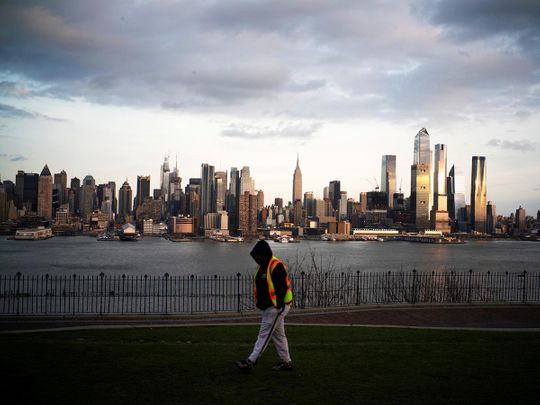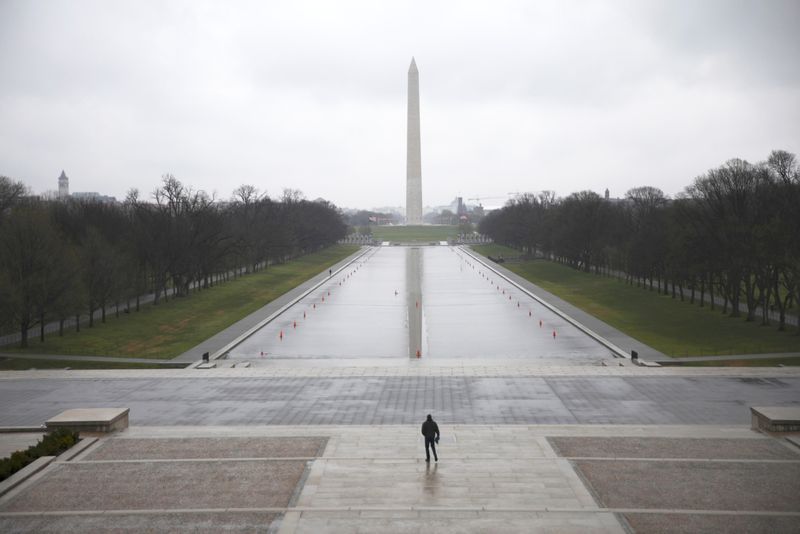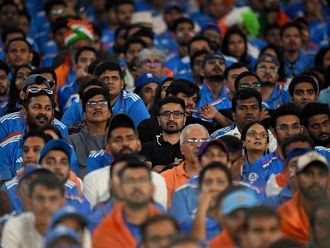
It’s hard to believe, but just a month ago Donald Trump and his henchmen were dismissing the coronavirus as a non-event. On Feb. 26, Trump declared that “You have 15 people, and the 15 within a couple of days is going to be close to zero.”
His remark came a day after Larry Kudlow, his administration’s chief economist, declared that the virus was almost completely contained, and that the economy was “holding up nicely.”
There are now more than 80,000 cases in the US — we don’t know how many more, because we’re still lagging far behind on testing. And the US trajectory is worse than that in other countries, so that we are the world’s coronavirus epicentre.
The bad news is that Trump is calling for the United States to “reopen” by Easter, a move nearly all public health experts believe would be catastrophic. Clearly he still doesn’t take the pandemic seriously
As for the economy: Last week more than 3 million workers filed for unemployment insurance, a number that is completely off the scale even as many others who are suddenly out of work aren’t eligible for unemployment benefits. We’re clearly losing jobs even faster than at the worst moments of the 2008-09 financial crisis, when we were losing “only” 800,000 per month.
Coping with the catastrophe
Trump’s dismissal and denial played a large role in getting us to this point. And he should be held accountable. But the crucial question now is whether we’re doing enough to cope with the catastrophe.
And the answer is no. We’re doing some of what we should be doing, mainly thanks to the efforts of Democratic governors and Democratic members of Congress — a statement that may sound partisan, but is the simple truth. But we’re still falling down on crucial fronts, mainly because even now Trump and his party aren’t taking the threat seriously.
What should we be doing? Three main things.
First, we need an all-out push to get essential medical equipment to where it’s needed. This means everything from face masks and other personal protective equipment for health care workers to ventilators for critical patients. It also, of course, means a vast expansion of testing.
The multiple weeks we wasted thanks to Trump’s virus denial have put us far behind the curve, and thousands of Americans will die unnecessarily as a result. But a full-court press could still make a huge difference.
Unfortunately, that’s still not happening. Trump has the power to mobilise industry to produce crucial equipment, but he has refused to use that power, airily declaring that “we’re not a shipping clerk.”
Actually, we don’t want him to be a shipping clerk. We want him to be a traffic cop, directing resources to where they’re needed most — a role the federal government has always played in wartime, which the current crisis most resembles.
But he won’t take responsibility, so we’re now seeing a chaotic scramble that will surely kill thousands more.
Second, we need to slow the virus’s spread, by reducing personal contacts that might lead to new infections — “social distancing.” The good news is that a number of states have taken strong action, closing non-essential businesses, banning almost all gatherings and issuing shelter-in-place orders to stop people from going out. And early indications are that these actions are working.
The bad news is that Trump is calling for the United States to “reopen” by Easter, a move nearly all public health experts believe would be catastrophic. Clearly he still doesn’t take the pandemic seriously. And some Republican governors share his fecklessness. For example, Ron DeSantis, Florida’s governor, is still refusing to close the state’s beaches.
So crucial measures to slow the pandemic’s spread are partial, and the president is offering the opposite of leadership. But much of the country is doing the right thing despite Trump.

Economic contraction
Which brings me to the third thing we need to do: Provide financial aid to families and businesses in the face of an unavoidable economic contraction. What we’re seeing in those surging unemployment claims isn’t a conventional recession; it’s more like a medically induced coma, done for the patient’s own good — which is why Trump’s desire to get people back to work is lethally misguided. But people need to eat even while they can’t work.
So two cheers for the $2 trillion legislation the Senate just passed. People keep calling it a “stimulus” bill, but that’s not what it really is. Instead, it’s mainly disaster relief: checks to families, enhanced unemployment benefits, aid to hospitals and hard-pressed states, and loans to help small businesses survive.
It’s a highly imperfect bill, with plenty of potential for abuse by special interests. But it’s infinitely better than the ideas Trump and other Republicans were floating just a few days ago, mainly because Democrats insisted that the legislation actually help people in need.
What the bill won’t do, however, is prevent a huge death toll if, as seems all too likely, the rapid spread of the coronavirus overwhelms hospitals that still aren’t getting the equipment they need. And the tragedy is that many of those deaths will be the direct result of bad leadership — Trump’s disdain for expertise and refusal to take the threat seriously, a refusal that continues to cripple our response even now.
— Paul Krugman is one of America’s foremost public intellectuals. He is a Nobel laureate and teaches economics at the City University of New York







